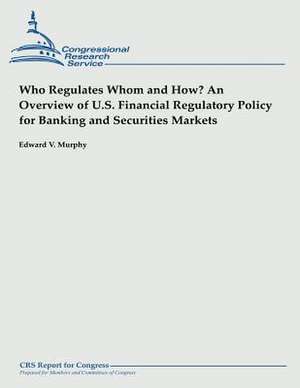Who Regulates Whom and How? an Overview of U.S. Financial Regulatory Policy for Banking and Securities Markets
Autor Edward V. Murphyen Limba Engleză Paperback
Preț: 99.68 lei
Nou
Puncte Express: 150
Preț estimativ în valută:
19.07€ • 19.96$ • 15.88£
19.07€ • 19.96$ • 15.88£
Carte disponibilă
Livrare economică 10-24 martie
Preluare comenzi: 021 569.72.76
Specificații
ISBN-13: 9781490957739
ISBN-10: 1490957731
Pagini: 58
Dimensiuni: 216 x 279 x 3 mm
Greutate: 0.16 kg
Editura: CREATESPACE
ISBN-10: 1490957731
Pagini: 58
Dimensiuni: 216 x 279 x 3 mm
Greutate: 0.16 kg
Editura: CREATESPACE
